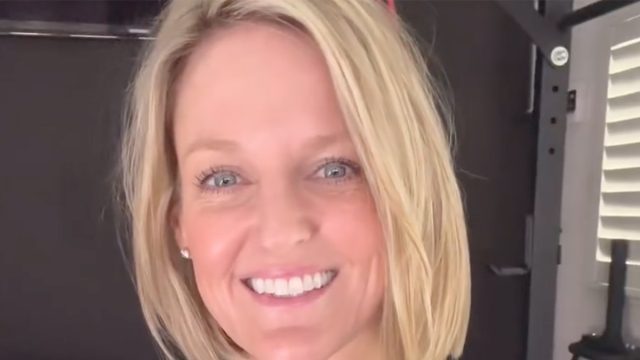10 Non-Negotiables for Fat Loss Over 40, According to an Expert

Are you trying to lose weight and blast fat over 40? Julie Clouse is a social media influencer and fitness and macros expert who tries to "inspire others to be the best version of themselves." In a new social media post she unveils her healthy habits for losing weight post-40. "Top 10 non-negotiables for fat loss after 40," she writes. "It won't always be easy, but it can be simple. Habits build momentum. 90% of people who love exercising & eating healthy didn't start that way. But by staying consistent, they felt better, looked better, and fell in love with the process," she writes.
Create a Calorie Deficit
The first thing to do is make sure you aren't consuming more than you are burning. "Create a calorie deficit (at least 250 cals)" she writes.
Amp Up Protein Intake
Next, amp up your protein intake. "Eat 25-30g of protein at every meal," she says. According to clinical trials, consuming more protein than the recommended dietary allowance not only reduces body weight (BW), but also enhances body composition by decreasing fat mass while preserving fat-free mass (FFM) in both low-calorie and standard-calorie diets.
Track Food
Next, make sure you are keeping track of everything you eat. "Track your food for overall calories and protein," she says.
RELATED: 17 Pre-Meal Foods That Burn Fat Like Ozempic, According to an Expert
Lift Weights
Strength training is another core habit. "Lift weights 3-4 times per week," she writes. According to the Mayo Clinic, strength and weight training help reduce body fat, preserve and increase lean muscle mass, and burn calories more efficiently. Strength training may also help you:
- Develop strong bones
- Manage your weight
- Enhance your quality of life
- Manage chronic conditions
- Sharpen your thinking skills
Walk Up to 10,000 Steps Per Day
Next, get your steps in. "Get 8-10k steps per day—add a weighted vest for an extra burn!" she suggests. A 2018 study published in the journal Obesity found a link between walking 10,000 steps a day and weight loss and weight management. Other studies published by the Journal of American Medical Association (JAMA) in JAMA Neurology and in JAMA Internal Medicine also linked walking 10,000 steps a day to less dementia and less cardiovascular disease overall, with less heart disease, less heart failure, and fewer strokes.
Eat Whole Foods
When it comes to diet, it's not just about the numbers but the quality of food you eat. "Choose 90% Whole Foods," she says.
Hydate
Make sure to stay hydrated. "Drink half your body weight (lbs) in ounces of water—I always add electrolytes too," she writes. According to the Mayo Clinic, hydration is essential for various reasons. Water helps eliminate waste through urination, perspiration, and bowel movements, keeps your temperature regular, lubricates and cushions joints, and helps protect sensitive tissues.
Don't Cut Out Entire Food Groups
You don't need to be super restrictive. "STOP cutting out entire food groups. Instead of saying no sugar, allow yourself a small treat that fits your goals. No food is off-limits," she says.
Limit Alcohol
Don't drink your calories. "Limit alcohol—this one is HUGE!" she maintains. Not only is alcohol high in calories but the more you drink, they more likely you are to make poor food choices and neglect exercise.
RELATED: 10 Foods to Avoid If You're Trying to Burn Fat, Says Expert
Don't Give Up
Finally, be patient. "STOP throwing in the towel after one bad day. Just get back on track the next day," she reminds. "This is a lifestyle, NOT a diet. A few 'bad' days won't ruin your progress. Ditch the dieting mentality and six-week plans—that was my BIGGEST mistake for years. Stay consistent, make it sustainable, and fit in the foods you love. It CAN work. You CAN be fit long after 40!" And if you enjoyed this article, take advantage of these 15 Quick Ways to Lose Body Fat Percentage in a Week.




